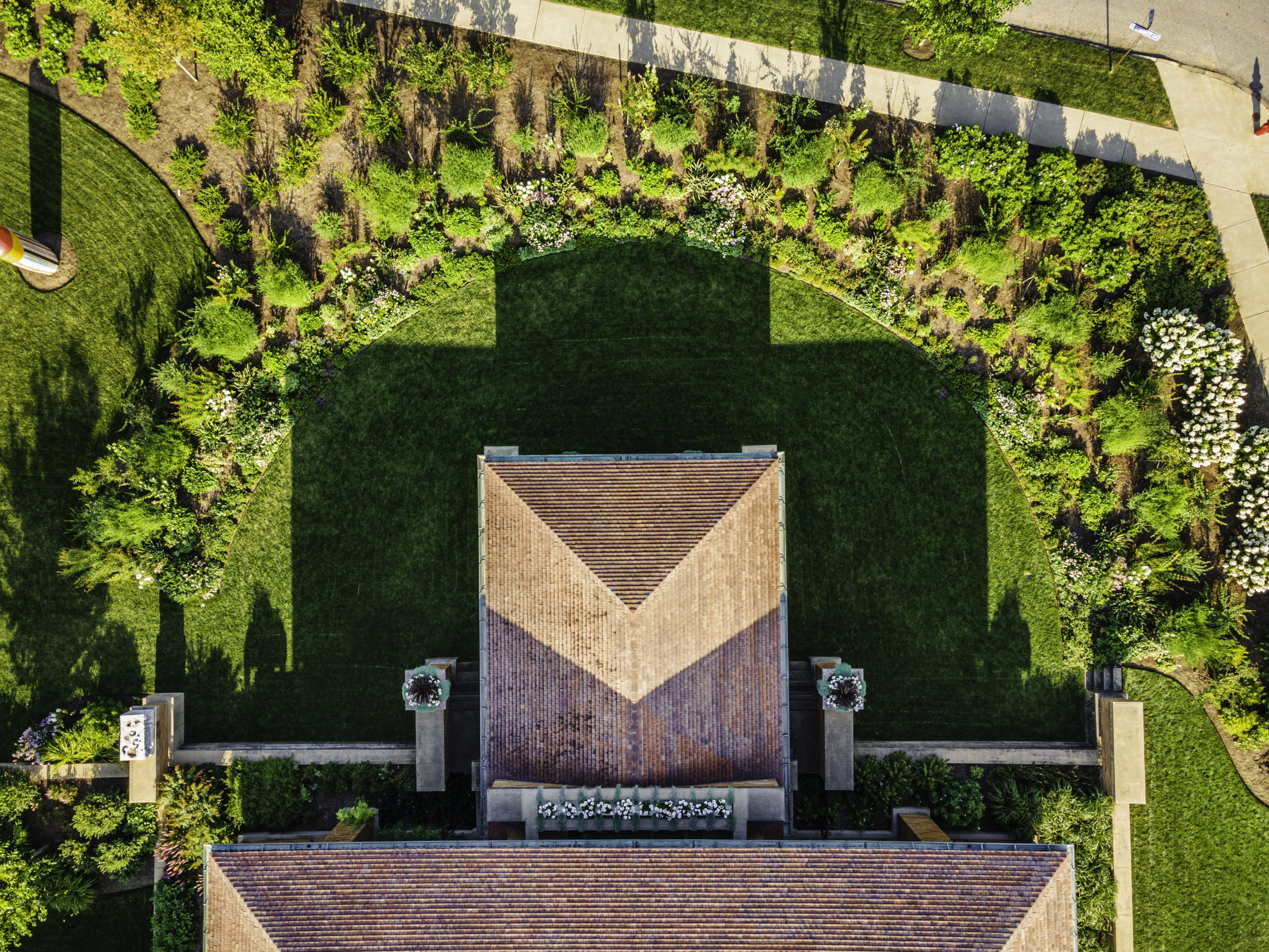This article, written by Kevin Kirkland, originally appeared in the Pittsburgh Post-Gazette on August 6, 2021.
Too small for the big-kid rides, I wrap my arms around my horse’s muscular neck as he rises and falls like the waves of Lake Erie.
In another Kodachrome memory, I squint up at a hill of flowers as colorful and orderly as my Crayola 64-pack. I wonder: Are they real?
They are in the floral clock on the Canadian side of Niagara Falls. But the horse with the carved, flowing mane and flaring nostrils was part of the carousel at Crystal Beach in nearby Ontario, Canada. The 1880s amusement park closed in 1989 and the carousel was sold along with its roller coasters and other rides.
Now the horses have come around again, along with lions, ostriches, giraffes and other carved wooden creatures in a restored antique merry-go-round powered by the sun, the Buffalo Heritage Carousel.
And the flowers? They still bloom on the floral clock’s 40-foot face on Canada’s side of the falls. Starting Monday, vaccinated U.S. residents can again visit Canada.
But why wait in line at the Peace Bridge? You can see Frank Lloyd Wright’s “floricyle” — a huge, curving garden bed where flowers bloom in succession from March through November — at Buffalo’s Darwin Martin House. Both attractions are a little over three hours’ drive from Downtown Pittsburgh.
A carousel comes home
The 34 carousel animals that circle endlessly in a solar-powered pavilion by the Buffalo River started as blocks of wood carved by unknown artisans in suburban North Tonawanda, N.Y. Spillman Engineering Co. craftsmen — many of whom also carved for Spillman’s cross-town competitor, now the Herschell Carrousel Factory Museum — created this carousel in 1924 for Domenick DeAngelis, who operated it at various parks in Massachusetts. It’s known as a menagerie carousel because it has more than horses.
After DeAngelis died in 1952, his family kept the carousel in storage for 60 years, hoping to see it run once again. In 2016, the Erie Canal Harbor Development Corp. bought it for $250,000 to install at Canalside, an entertainment complex in downtown Buffalo near the western terminus of the Erie Canal. Then the fun really began.
“My friend recruited me,” said artist Linda Chaffee, 70, of Akron, N.Y. ‘“We’re going to paint this carousel. It will take a year.’ It took four years.”
The restorers, most of them volunteers like Chaffee, spent about 200 hours on each animal, heat-stripping and documenting each layer of paint, removing screws and nails, patching, sanding and applying five coats of paint and sealer.
Though the horses were ordered from a catalog, customers could add details that made them unique. DeAngelis, an Italian immigrant, asked Spillman to carve an American eagle and sword into horses’ flanks.
“Several of our horses are one of a kind. We’re the only one who has them,” said Carima El-Behairy, director of operations and development.
Chaffee, who often works the register, said 50,000 people have ridden the carousel since it opened in late May.
“What surprises me is it’s all ages,” she said. “We had two ladies who were 99 and 104 years old. They walk through the door and they’re kids again.”
Modern garden from yesteryear
We don’t know if Frank Lloyd Wright invented the word “floricycle,” but letters between the architect and his wealthy clients, Isabelle and Darwin Martin, show all three liked the idea of flowers blooming from early spring to late fall.
But how to do it? That question and Wright’s delays in sending a detailed landscape design vexed Martin in the early 1900s.
“As the shrubs were drying up we planted them Saturday and enclose this photograph showing how they were planted,” the Larkin soap executive wrote in 1905. “If the photograph is meager, remember that the planting plan was meager, too.”
Martin had no way of knowing that Wright’s plant expert, Walter Burley Griffin, had quit because he wanted to be paid in something other than Japanese prints. With Griffin’s help, Wright came up with a plant list filled with old-fashioned garden stalwarts — hollyhock, phlox, columbine, lupine and my personal favorite, delphinium.
All of them grow today in the floricycle and other beds around the landmark Darwin Martin House (martinhouse.org) and adjacent Barton House built for Martin’s sister.
But it wasn’t easy. Martin lost his fortune in the 1929 stock market crash and his landmark house and 1.5 acres were in ruins when restoration began in the 1990s. The gardens were the last piece, begun in 2016.
Landscape architect Mark Bayer was charged with recreating this collaborative landscape.
“This garden is as much the Martins’ as it is Frank Lloyd Wright’s. They loved plants and gardening,” said the owner of Bayer Landscape Architecture in Honeoye Falls, N.Y.
Since it was a rehabilitation rather than restoration, Bayer had more leeway in choosing perennials, shrubs and trees. Improved cultivars are available for most of the plants that grew a century ago.
The ‘Pagans Purple’ delphiniums by the verandah were spectacular when I visited in early July. But they have been fading lately so Susan Perlow and other garden volunteers recently cut them back.
“We get a beautiful second bloom in September,” said the recent retiree from Williamsville, N.Y.
Rosanne Stolzenburg, of East Amherst, said she and the other 20 regular garden volunteers learn constantly and sometimes use those lessons in their home gardens. Her favorite flower overall is delphinium, but it changes every week.
“This week the phlox look amazing. They’re purple, pink and white,” she said.
Perlow said she feels “privileged” to work upon a national landmark property that is part of The Great Wright Road Trip along with Western Pennsylvania’s Fallingwater, Kentuck Knob and Polymath Park.
Stolzenburg, who averages 12-15 hours a week in the gardens, agreed.
“To see how the landscape complements the beautiful Martin House, it’s awesome,” she said.









